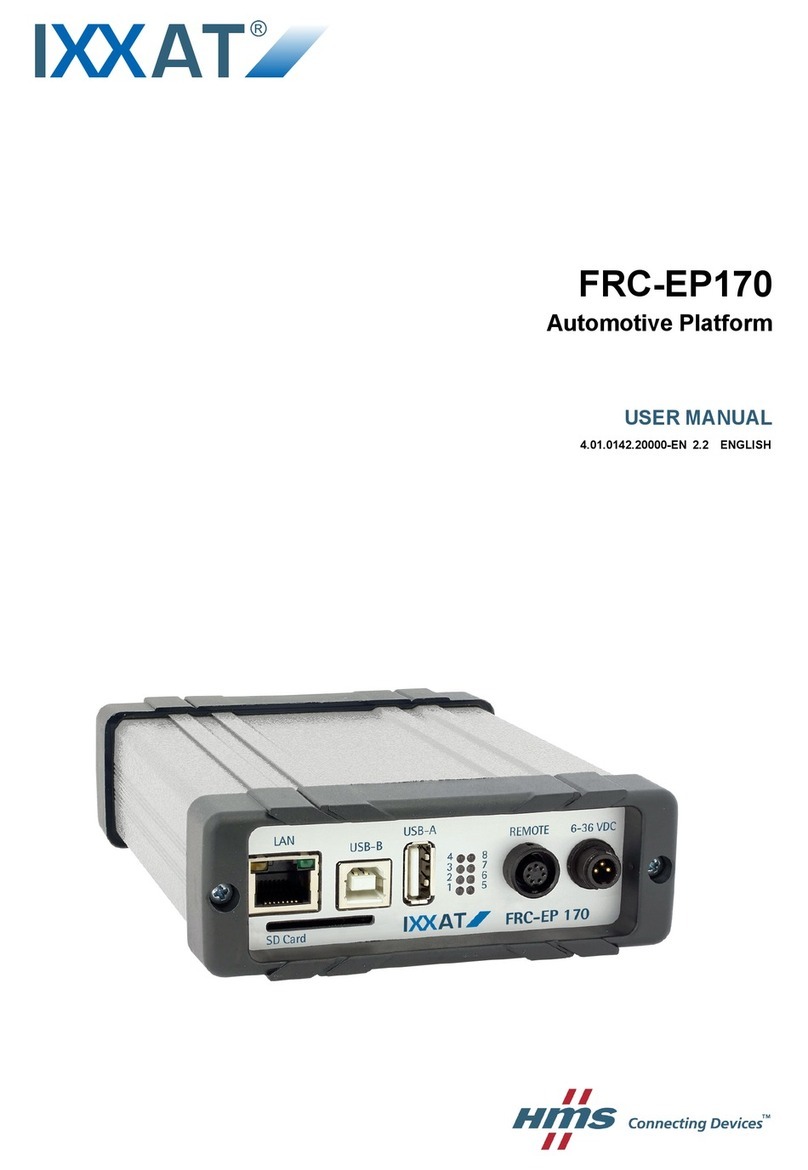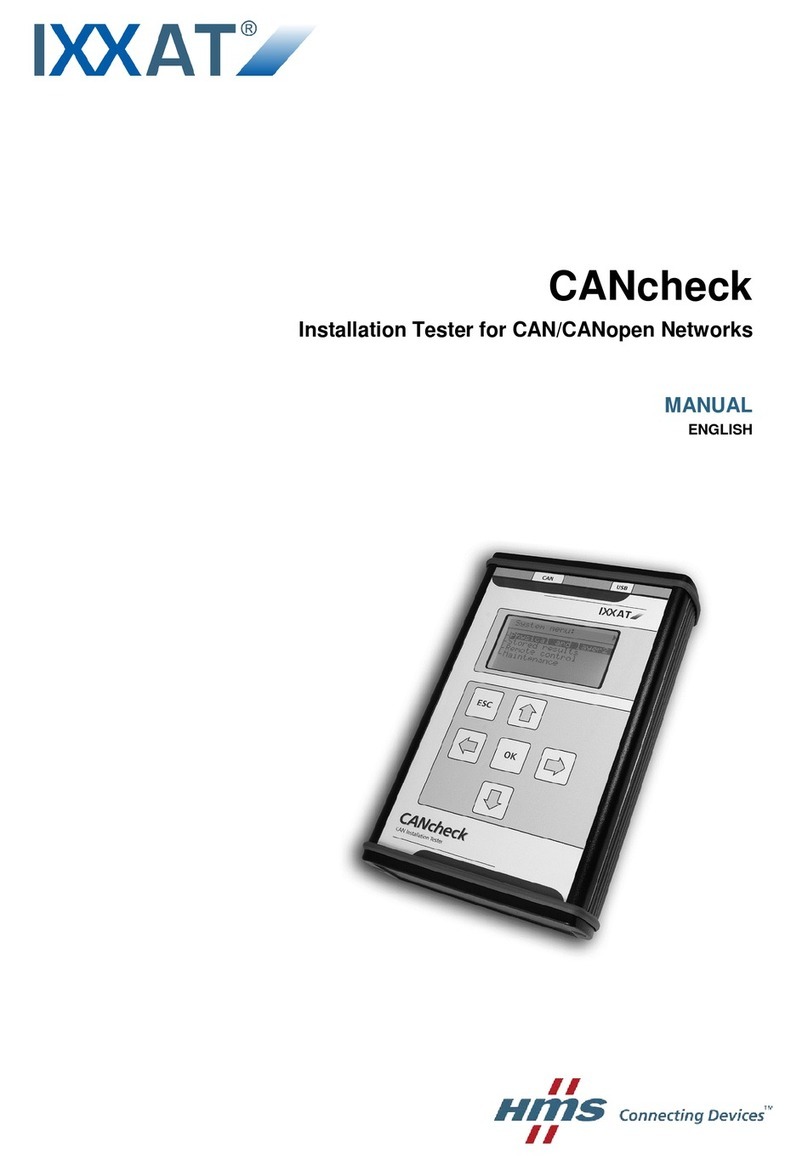
Contents
1Introduction................................................................................5
1.1 Overview ............................................................................. 5
1.2 Functions and performance features ................................. 6
1.3 Support ............................................................................... 7
1.4 Returning hardware............................................................ 7
2Ports............................................................................................8
2.1 Pin assignment.................................................................... 8
2.1.1 CAN connector .........................................................................8
2.1.2 USB connector..........................................................................8
2.2 Battery compartment ......................................................... 9
2.3 Trigger output ..................................................................... 9
3Operation..................................................................................10
3.1 Switching on and off ........................................................ 10
3.2 Display............................................................................... 10
3.3 Keyboard........................................................................... 10
4Summarized tests .....................................................................12
4.1 Line parameters ................................................................ 12
4.2 Operating parameters....................................................... 18
4.2.1 Operating mode layer 2 ..........................................................18
4.2.2 Operating mode CANopen......................................................23
5Individual tests .........................................................................24
5.1 Wiring test ........................................................................ 25
5.2 Termination resistors......................................................... 28
5.3 Line length ........................................................................ 30
5.4 Line impedance ................................................................. 32
5.5 Power supply .................................................................... 34
5.6 Baudrate detection ........................................................... 35
5.7 Layer 2 - identifier scan .................................................... 37
5.8 CANopen – node ID scan................................................... 39
5.9 Bus load ............................................................................ 41
5.10 Layer 2 - signal levels per identifier .............................. 44
5.11 CANopen - signal levels per node ID............................. 47
5.12 Trigger output ............................................................... 50
Copyright IXXAT Automation GmbH CANcheck Manual, Version 1.2
3





























